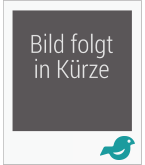

Broschiertes Buch
Percutaneous Cholecystostomy
1990.
30. November 1990
Springer / Springer Berlin Heidelberg / Springer, Berlin
978-3-540-52905-7
| eBook, PDF | 40,95 € |
eBook, PDF
6. Dezember 2012
Springer Berlin Heidelberg
Ähnlichkeitssuche: Fact®Finder von OMIKRON
